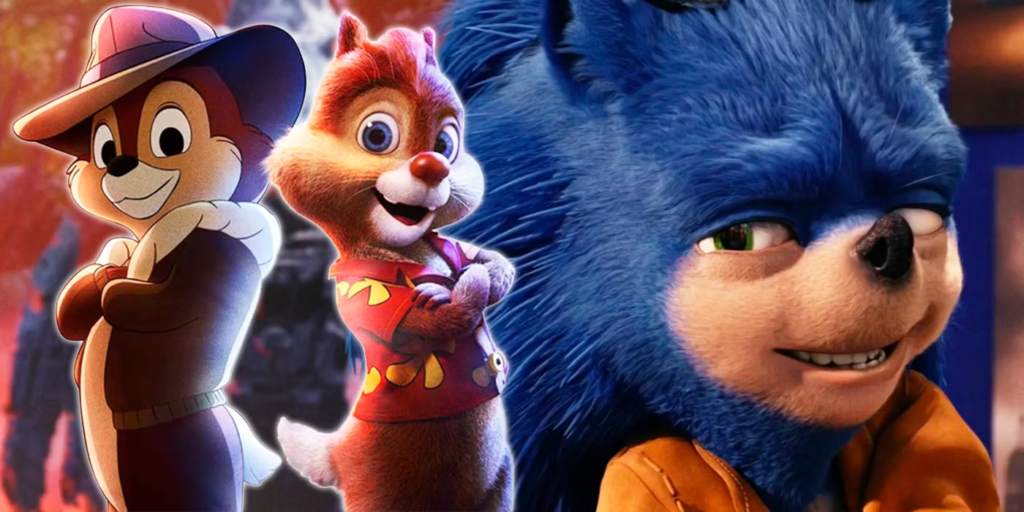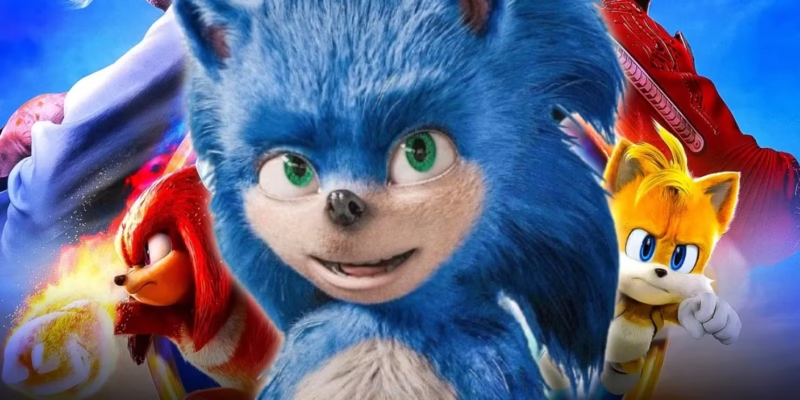When the first trailer for Sonic the Hedgehog (2020) was released, fans were in for a shock. Instead of the beloved blue blur from Sega’s iconic video game series, audiences were introduced to an unsettling version of the character, quickly dubbed “Ugly Sonic.” The backlash was immediate, with fans criticizing everything from his human-like teeth to his disproportionate facial features.
The controversy surrounding Ugly Sonic led to an unexpected journey—from an initial disaster to becoming an ironic fan-favorite and pop culture phenomenon. This article explores the origins of Ugly Sonic, the controversy that led to his redesign, and his surprising return in media.
The Origins of Ugly Sonic
The First Sonic the Hedgehog Trailer
In April 2019, Paramount Pictures released the first trailer for the Sonic the Hedgehog movie. Instead of excitement, it sparked widespread outrage. Fans were horrified by Sonic’s appearance, which looked vastly different from the character’s traditional design.
Some of the most criticized aspects of Ugly Sonic included:
- Human-like teeth – The most unsettling feature, making Sonic look disturbingly realistic.
- Small, beady eyes – Unlike the traditional large, expressive eyes of the video game version.
- Strangely proportioned body – Too tall, too thin, and lacking the cartoonish appeal of the original Sonic.
Memes and jokes flooded the internet, with fans calling for Paramount to change the design before the film’s release. The backlash was so strong that the studio delayed the movie to fix Sonic’s look.
The Redesign: Fixing the Ugly Sonic Problem

Paramount’s Response to Fan Outrage
Recognizing the uproar, Paramount Pictures made the bold decision to redesign Sonic completely. The film’s director, Jeff Fowler, announced that the team had listened to fan feedback and would be making necessary changes.
This decision resulted in a three-month delay, pushing the film’s release from November 2019 to February 2020. Sonic’s new design closely resembled his video game counterpart, featuring:
- Larger, more expressive eyes
- Shorter and rounder proportions
- A more animated, friendly appearance
- The removal of the human-like teeth
The redesign was met with widespread praise. When the updated trailer was released, fans were delighted, and excitement for the movie skyrocketed.
The Success of Sonic the Hedgehog
With the redesigned Sonic, Sonic the Hedgehog (2020) became a major hit, grossing over $300 million worldwide. The film’s success proved that studios could benefit from listening to fan feedback.
But what happened to Ugly Sonic? Surprisingly, he did not disappear into obscurity.
Ugly Sonic’s Ironic Comeback
The Meme Legacy
Even after his removal from the film, Ugly Sonic remained a beloved joke in online communities. Fans created endless memes, fan art, and even theories about where he could reappear. His eerie, unsettling look became an internet legend, much like other infamous redesigns (such as the early versions of Shrek or Cats).
Ugly Sonic soon became a symbol of how fan influence can shape media, turning a design failure into something iconic.
Ugly Sonic in Chip ‘n Dale: Rescue Rangers (2022)
In a shocking turn of events, Ugly Sonic made a cameo in Disney’s Chip ‘n Dale: Rescue Rangers (2022). Voiced by comedian Tim Robinson, he appeared as a washed-up celebrity, embracing his meme status.
His character in the film exaggerated his odd features, leaning into his awkwardness while making fun of his own existence. This unexpected cameo delighted fans, proving that even a failed design could find new life in pop culture.
Why Ugly Sonic Became a Pop Culture Icon
A Perfect Example of Internet Humor
The internet thrives on ironic humor, and Ugly Sonic’s story embodies this perfectly. His design was so bad that it became good—at least in a comedic sense.
Some key reasons Ugly Sonic became a cultural phenomenon include:
- Nostalgia for internet disasters – Fans love to revisit and mock failed designs from major franchises.
- An underdog story – Ugly Sonic went from hated to celebrated, making him an unlikely fan-favorite.
- Meme potential – His unsettling design was perfect for internet humor, leading to countless edits and jokes.
A Lesson for Movie Studios

Ugly Sonic’s story also serves as a lesson for Hollywood. Fan engagement can make or break a film, and listening to audiences can lead to better results. Paramount’s decision to redesign Sonic turned what could have been a disaster into a major success.
Meanwhile, Ugly Sonic’s return in Chip ‘n Dale showed that audiences appreciate when studios embrace past mistakes in a self-aware and humorous way.
Conclusion: Ugly Sonic’s Legacy
What started as one of the most criticized character designs in film history has now become a beloved internet icon. Ugly Sonic’s story—from the disastrous 2019 trailer to his unexpected return in Chip ‘n Dale: Rescue Rangers—proves that even the biggest design failures can find a second life in pop culture.
More than just a meme, Ugly Sonic represents a moment in internet history where fan voices reshaped a blockbuster film. His ironic comeback reminds us that sometimes, ugly can be unforgettable.






